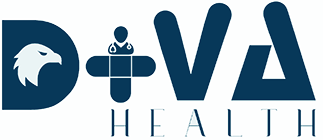

Most innovative technique for hair, beard and mustache transplant with painless anesthesia in addition to no donor area shortening.
Application of painless anesthesia
Estethica Health Group applies the most innovative technique in hair, beard and mustache transplant without shortening the donor area and with the help of a painless anesthesia. This technique reduces bleeding during surgery and swelling of the head after the procedure. The combination of the Percoutaneous Technique with the specialized sapphire needle guarantees the high success rate of the hair transplant procedure. The application of anesthesia is a major component of hair transplant procedure. There are two techniques for applying local anesthesia.
Application with needles In classical hair transplant procedure prior to harvesting hair follicles local anesthesia is injected into those parts of the head where the grafts are extracted. Numerous punctures cause pain and discomfort for the patients causing longer hours for the entire transplant procedure.
Painless Anesthesia:
Thanks to the innovative high-tech devices in estethica, a painless application of local anesthesia is now possible. estethica applies painless anesthesia to all of its patients to ensure comfort and safety during the procedure. The device injects anesthesia into the skin with high pressure, helping to spread it evenly in depth. The device does not damage the surface of the skin and places the anesthetic in depth without creating discomfort for the patient.
Unshaven Hair transplant
The extraction of donor material from the back of the head takes place without the necessity of shortening the entire area. Thus, the procedure contributes to maintaining the integrity of the hair follicles by means with the use of low - RPM micro punch. The hair transplant apparatus is used both for the formation of the recipient channels and for the simultaneous transplant of the grafts. This risk-free hair transplant is dictated by the subtle technique of the device that spares the patient's natural hair and manages to build a new and dense hair line without the need to shorten it. The procedure is combined with the use of a sapphire needle for more precise graft placement. Painless hair transplant is used in specialized clinics around the world and ensures the comfort of the patients during the entire procedure. Hair transplant in estethica is administered under the supervision of a dermatologist, plastic surgeon and anesthetist under local anesthesia and lasts between five to seven hours depending on the amount of grafts to be transplanted. The choice of our patients in the use of these innovative technique and the work of our hair transplant team indicates the success of the post-op results. After one-day painless transplant we advise patients to take a day rest from work. The hair in the recipient area starts to grow in 3 months. The final result of the hair transplant is achieved in 1 year.
The choice of hair transplant technique, the success of the medical team, the comfort of full head hair transplant within only one day, the guarantee certificate are the main factor in achieving proper and risk-free hair transplant.
The cost of hair transplant procedures varies depending on the technique, clinic, and individual factors. For pricing details and a comprehensive consultation, please contact us via WhatsApp at +9647729559595.
DivaHealth – Exclusive Aesthetics Agent in Iraq

Anatomy and Physiology of the Cardiovascular System
The cardiovascular system comprises the heart, blood vessels, and blood, functioning collectively to transport oxygen, nutrients, hormones, and waste products throughout the body. The heart, a muscular organ divided into four chambers (right atrium, right ventricle, left atrium, and left ventricle), pumps blood systematically through two circulatory pathways:
- Pulmonary circulation: Deoxygenated blood is transported from the heart to the lungs for oxygenation and returned to the left atrium.
- Systemic circulation: Oxygen-rich blood is distributed from the left ventricle to tissues and organs via the aorta and returned to the right atrium.
Heart function is regulated by electrical impulses originating from the sinoatrial (SA) node, which coordinates rhythmic contractions to ensure efficient blood flow.

Common Cardiovascular Diseases
1. Coronary Artery Disease (CAD) : CAD occurs due to the accumulation of atherosclerotic plaques within coronary arteries, leading to reduced myocardial blood supply. Symptoms include angina pectoris, shortness of breath, and, in severe cases, myocardial infarction (heart attack). Treatment options include lifestyle modifications, pharmacotherapy (statins, beta-blockers, antiplatelet agents), and interventional procedures such as percutaneous coronary intervention (PCI) and coronary artery bypass grafting (CABG).
2. Heart Failure: Heart failure results from the heart's inability to pump blood effectively, leading to systemic congestion and inadequate perfusion of organs. It is classified into:
- Systolic heart failure (HFrEF) : Reduced ejection fraction due to weakened myocardial contraction.
- Diastolic heart failure (HFpEF) : Preserved ejection fraction but impaired ventricular relaxation
Management involves diuretics, ACE inhibitors, beta-blockers, and, in advanced cases, implantable devices such as pacemakers or left ventricular assist devices (LVADs).
3. Arrhythmias: Arrhythmias are abnormalities in the heart's electrical activity, resulting in tachycardia (rapid heartbeat) or bradycardia (slow heartbeat). Common arrhythmias include:
- Atrial fibrillation (AF): Irregular atrial contractions increasing stroke risk
- Ventricular tachycardia (VT): Rapid ventricular contractions, potentially life-threatening
- Heart block: Impaired conduction requiring pacemaker implantation.
Electrophysiological studies (EPS), antiarrhythmic medications, catheter ablation, and implantable cardioverter defibrillators (ICDs) are utilized for arrhythmia management.
4. Valvular Heart Diseases : Structural abnormalities in heart valves (stenosis, regurgitation) disrupt normal blood flow dynamics. Conditions such as aortic stenosis and mitral regurgitation are diagnosed using echocardiography and treated via valve repair, percutaneous interventions (TAVR), or surgical replacement.
5. Hypertension (High Blood Pressure): Chronic hypertension increases cardiovascular risk by predisposing individuals to stroke, heart failure, and renal disease. Blood pressure control through antihypertensive agents (ACE inhibitors, calcium channel blockers, diuretics) and lifestyle modifications is crucial in preventing complications.

Diagnostic Techniques in Cardiology
Cardiologists utilize several diagnostic modalities to evaluate cardiovascular health:
- Electrocardiogram (ECG/EKG) : Measures electrical activity of the heart to detect arrhythmias and ischemia.
- Echocardiography: Ultrasound imaging of cardiac structures to assess function and valve integrity.
- Stress Testing : Evaluates myocardial response to exertion, identifying ischemic changes.
- Cardiac Catheterization: Invasive procedure to assess coronary artery blockages and perform interventions.
- Cardiac MRI/CT : Advanced imaging modalities for detailed structural assessment

Preventive Cardiology and Lifestyle Modifications
Prevention plays a pivotal role in reducing cardiovascular morbidity and mortality. Key recommendations include:
1- Dietary Adjustments : Adopting a heart-healthy diet rich in fruits, vegetables, whole grains, and lean proteins while minimizing saturated fats, sodium, and added sugars.
2- Physical Activity: Engaging in regular aerobic exercise (150 minutes per week) to enhance cardiovascular fitness.
3- Smoking Cessation: Eliminating tobacco use to reduce the risk of atherosclerosis and myocardial infarction
4- Blood Pressure and Cholesterol Management : Routine screening and medical therapy for hypertension and dyslipidemia.
5- Diabetes Control: Optimizing blood glucose levels through dietary regulation, physical activity, and medication when necessary.

Advances in Cardiology
The field of cardiology continues to evolve with technological innovations, including:
- Gene Therapy: Investigating genetic modifications to treat inherited cardiac disorders.
- Artificial Intelligence (AI) in Cardiology : AI-driven algorithms for early detection and risk stratification.
Wearable Cardiac Monitors : Smart devices facilitating real-time heart rhythm tracking
Regenerative Medicine : Stem cell therapy exploring myocardial tissue regeneration
Conclusion
Cardiology remains a cornerstone of modern medicine, addressing one of the leading causes of morbidity and mortality worldwide. Advances in diagnostic techniques, pharmacological interventions, and surgical innovations have significantly improved patient outcomes. Continuous research and patient education on cardiovascular health are essential in promoting longevity and well-being

Coronary Artery Bypass Grafting (CABG)
1. Heart Failure :
Heart failure is a progressive condition where the heart's ability to pump blood is compromised, leading to systemic congestion and reduced tissue perfusion. It can result from ischemic heart disease, hypertension, valvular disorders, or cardiomyopathies. Treatment strategies involve optimizing preload and afterload with diuretics, angiotensin-converting enzyme inhibitors (ACEIs), beta-blockers, and device-based therapies such as implantable cardioverter-defibrillators (ICDs) and cardiac resynchronization therapy (CRT).
2. Arrhythmias : Cardiac arrhythmias refer to abnormal electrical activity in the heart, manifesting as tachycardia (fast heart rate), bradycardia (slow heart rate), or irregular rhythms (e.g., atrial fibrillation). Management includes antiarrhythmic medications, catheter ablation, and pacemaker implantation.
4. Valvular Heart Disease : Disorders of the heart valves (aortic, mitral, tricuspid, and pulmonary) can lead to stenosis or regurgitation, impairing hemodynamics and cardiac function. Diagnosis is made via echocardiography, and treatment may involve valve repair, transcatheter interventions, or surgical replacement.
5. Hypertension : Hypertension is a major risk factor for cardiovascular disease, increasing the likelihood of stroke, myocardial infarction, and chronic kidney disease. Management involves antihypertensive medications, dietary sodium restriction, weight control, and regular physical activity.

Diagnostic Modalities in (Cardiology)
Pharmacological Therapy : Includes antiplatelets, anticoagulants, beta-blockers, ACE inhibitors, calcium channel blockers, diuretics, and statins.
Interventional Cardiology : Techniques such as balloon angioplasty, coronary stenting, and percutaneous valve replacement.
Cardiac Surgery : Includes coronary artery bypass grafting (CABG), valve repair/replacement, and heart transplantation.
Lifestyle Modifications : Smoking cessation, healthy diet, regular exercise, and stress management are crucial for cardiovascular health.

Preventive Cardiology and Risk Factor Management
Primary prevention aims to reduce risk factors such as smoking, obesity, hyperlipidemia, diabetes, and hypertension through public health initiatives. Secondary prevention focuses on preventing recurrent cardiovascular events in patients with existing conditions.
Conclusion
Cardiology continues to evolve with advances in technology, precision medicine, and innovative therapeutic strategies. Early detection, accurate diagnosis, and timely interventions play a crucial role in improving patient outcomes and reducing the global burden of cardiovascular diseases.
